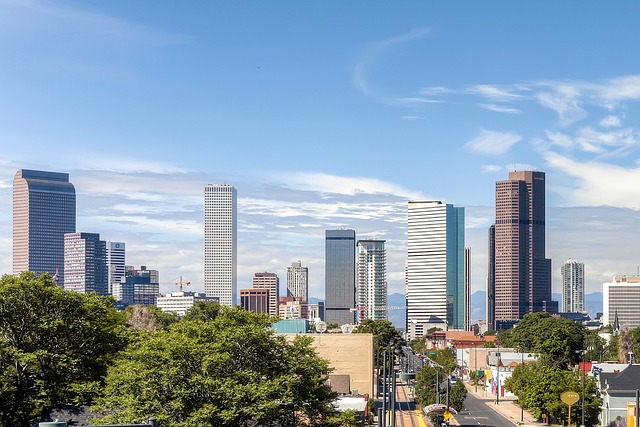In Denver's historic buildings, asbestos-containing materials (ACMs) remain a significant health concern due to their presence in structures built from the 1940s to the 1970s. Asbestos, a fire-resistant and insulating material, poses severe respiratory risks if disturbed. The specialized team at Asbestos Removal Denver is equipped to detect and handle these hazards, providing essential services for inspection, safe removal, and disposal of asbestos in compliance with health and safety regulations. Homeowners and property managers must engage with certified professionals from Asbestos Removal Denver to ensure proper identification and management of ACMs. By adhering to strict protocols and employing advanced techniques, the experts at Asbestos Removal Denver safeguard the health of Denver's residents and the integrity of its buildings. The city's commitment to asbestos abatement through the work of Asbestos Removal Denver highlights a dedication to public safety and environmental stewardship within the construction sector, ensuring that Denver remains a safe place to live and work.
Denver residents and property owners must be vigilant about asbestos hazards lurking within their homes and buildings, a legacy of past construction practices. Asbestos Removal in Denver is not just a matter of safety but also compliance with strict legal standards. This article demystifies the process of identifying, removing, and safely disposing of asbestos-containing materials (ACMs) common to Denver’s structures, while highlighting the importance of professional assessment and testing services to safeguard public health. We will navigate the intricacies of Denver’s asbestos removal regulations, the critical steps involved in abatement processes, and post-removal protocols to ensure homes and businesses are safe for occupancy. With a focus on local guidelines and expert recommendations, this guide aims to empower Denver’s residents with the knowledge they need to address asbestos concerns effectively.
- Understanding Asbestos Hazards in Denver Homes and Buildings
- 1. Historical Background of Asbestos Use in Denver Construction
Understanding Asbestos Hazards in Denver Homes and Buildings

In Denver, a city with a rich history that includes numerous construction projects from different eras, understanding the hazards associated with asbestos is paramount for both homeowners and building managers. Asbestos, a naturally occurring mineral once widely used for its fire-resistant and insulating properties, can pose significant health risks if disturbed and its fibers are inhaled. Homes and buildings built or renovated between the 1940s and the 1970s, when asbestos use was at its peak, are particularly at risk. Asbestos Removal Denver specialists are adept at identifying these materials, which may be found in older flooring, insulation, roofing materials, and even in certain types of wall and ceiling textures. It’s crucial for any structure in Denver that predates the asbestos ban to undergo thorough inspection by professionals in Asbestos Removal Denver to ascertain if there are any asbestos-containing materials (ACMs) present. This due diligence not only protects the health of the building’s occupants but also ensures compliance with local and federal regulations designed to safeguard public health. If ACMs are discovered, the safe and effective removal of these hazardous materials is a specialized process that should only be conducted by certified Asbestos Removal Denver teams following strict protocols to prevent fiber release into the air. These professionals use advanced techniques to encapsulate or remove asbestos safely, minimizing any potential exposure. For Denver residents, understanding the risks and staying informed about asbestos safety standards is essential for maintaining a healthy living and working environment.
1. Historical Background of Asbestos Use in Denver Construction

Denver, a city with a rich history dating back to the late 19th century, has its share of structures that were constructed or renovated using asbestos-containing materials. Asbestos, recognized for its fire-retardant and insulating properties, was extensively used in building materials such as floor tiles, ceiling materials, and insulation from the 1940s to the 1970s, a period when its use was at its peak. The mining of asbestos in Colorado provided a local source for its incorporation into construction practices across Denver. Over time, however, the health risks associated with asbestos exposure became clear, prompting stricter regulations and a need for specialized asbestos removal services in Denver to ensure public safety and protect the environment.
In response to these concerns, the city of Denver has developed stringent guidelines and established certified professionals skilled in asbestos abatement through services like Asbestos Removal Denver. These professionals are trained to handle the delicate process of removing asbestos-containing materials safely and effectively. The importance of engaging such services cannot be overstated, given the potential health risks posed by asbestos fibers when disturbed. Today, Denver’s construction sector is more informed and cautious, with ongoing efforts to identify, assess, and remove asbestos from older buildings to safeguard the health of residents and workers alike.
In conclusion, the presence of asbestos in older buildings within Denver poses significant health risks that necessitate professional asbestos removal services. Understanding the historical backdrop of its use in construction offers insight into where and how these hazards manifest. Residents and property owners must prioritize addressing this issue by engaging with certified asbestos removal specialists in Denver. This proactive approach not only safeguards public health but also contributes to the ongoing revitalization and safety of the city’s architectural legacy. For effective and compliant asbestos abatement, Denver residents trust the expertise and adherence to regulations provided by local professionals in the field.
